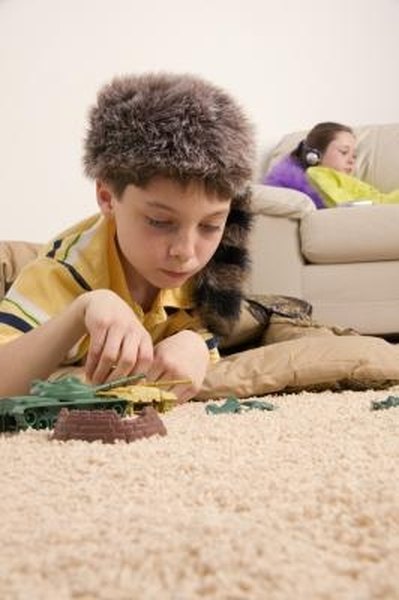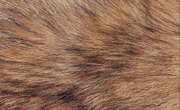
Tanning coon skins is not a complex process, but it is labor intensive. The tanning process also requires time and persistence to complete the hide. Although coon skins are much smaller than elk, deer and other game animals, they must be processed with care and might require a similar amount of time. The finished product will be a flesh-free skin that is prepared for display. The tanned skin also is prepared to be worked into a hat or other garment.
Items you will need
Plywood
Finishing nails
Knife
Non-iodized salt
Plastic buckets
Plastic garbage can
Liquid dish soap
Potassium aluminum sulfate
Washing soda
Borax
Tanning oil
Soft brush
Preparation
Stretch the hide on a piece of plywood with the fur side down. Use finishing nails to attach the corners of the hide to the wood. Scrape the visible flesh from the hide with a sharp knife. Cut a slit down the tail and scrape any flesh from the inside of the tail.
Pour one pound of noniodized salt on the hide and use your hands to lightly rub it into every part of the exposed skin. Set the hide at an angle and leave it to dry for one night. The salt will remove the moisture from the hide.
Use the knife to scrape away all flesh after the hide has dried. The flesh will be visible in a white color, but you must be careful not to puncture the hide with the knife. Remove the hide from the plywood and place the hide in a plastic bucket of cold water for 5 minutes.
Remove the hide from the cold water and place it in a plastic bucket of 75 degree Fahrenheit water. Add one tablespoon of liquid dish soap to the water and work the hide with your hands to remove the salt and any grease. Remove the hide and rinse with cold water until the soap is completely removed from the skin and fur.
Nail the hide to the plywood using the same holes as before. Do not add holes as they will weaken the corners, and the hide might tear. Use the knife blade to scrape the wet hide and remove any extra fat, flesh and tissue.
Tanning
Place one gallon of water in a plastic trash can. Pour one pound of potassium aluminum sulfate in the water. Pour one-half gallon of water in a plastic bucket. Place four ounces of washing soda in the bucket and stir until it is dissolved. Pour the washing soda into the trash can and use a stick to mix the solution.
Place the skin in the solution and use the stick to ensure all parts are covered. Leave the skin in the solution for four days.
Fill a plastic bucket with one gallon of cold water and add one ounce of borax. Remove the hide from the garbage can and rinse it in the water. Stretch and nail the hide to the plywood and set it at an angle to drain the water from the hide.
Heat hide tanning oil in a microwave or on a stove. Use a soft brush to apply a liberal amount of the warm oil to the hide. Leave the hide to dry for one night and repeat the process if the hide is not yet supple. Remove the hide from the plywood and hang it to dry for one week.
Warnings
- Wear rubber gloves and eye protection while working with the chemical solution. The solution is harmful with repeated contact.
Tips
- Work the hide outside or in a workshop. The hide will smell until the process is completed.
References
Tips
- Work the hide outside or in a workshop. The hide will smell until the process is completed.
Warnings
- Wear rubber gloves and eye protection while working with the chemical solution. The solution is harmful with repeated contact.
Writer Bio
Zach Lazzari is a freelance outdoor writer specializing in hunting, fly fishing and the general outdoors. He guided fly fishing trips for 10 years in Colorado, Alaska, Montana and Patagonia-Chile. Zach lives in Montana and splits time between the river and keyboard.


